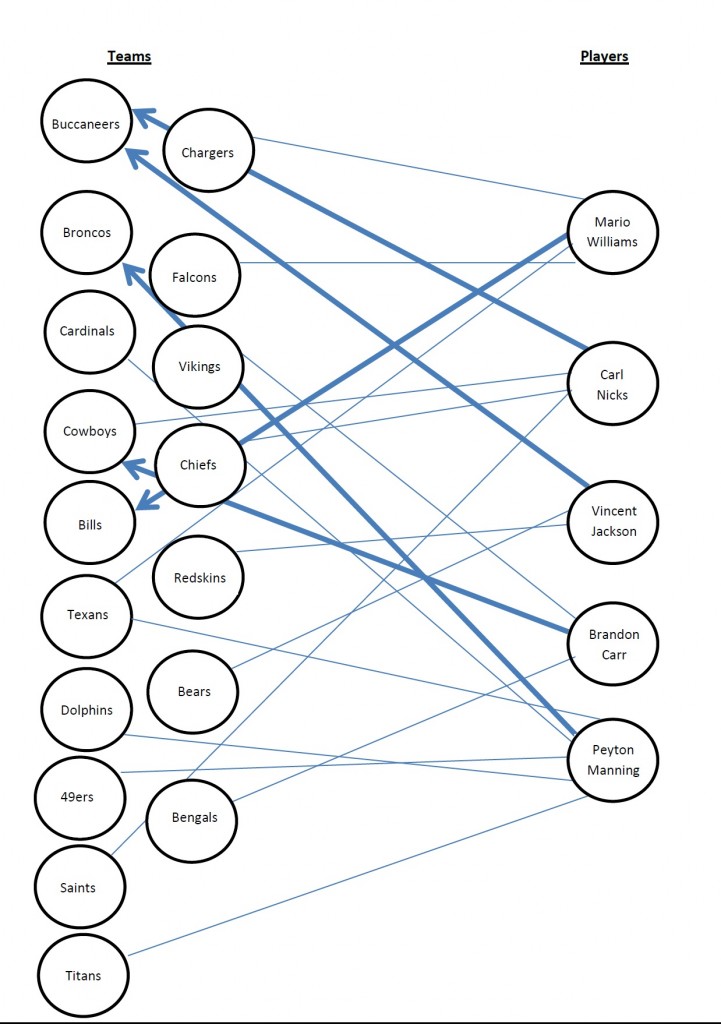NFL Free Agency Analysis
The NFL free agency period seems to act in a similar manner to a first-price open bid auction, albeit with a few twists. All free agents sit in the pool at the same time, and bids for each player are ongoing through time. While in a first bid auction there is one item being sold at a time, free agency sells all players at once. This would present to us a very raucous and cluttered graph, where each player has anywhere from 0-32 connections to teams. In the theory of bipartite graphs, each product will go to whoever is willing to pay the most for it. However, free agency differs from this ideal model in that players might have bias toward or against certain buyers. This actually makes the ideal model seem less realistic, as selling items is certainly not ideal all the time. For instance, paying for shipping could actually make it so that selling to a buyer who offers less might return a larger profit. A company might not want to trade with another company who employs child laborers due to their image. These examples run parallel to the free agent market, where players may want to stay within a certain region, or they may believe that they fit in better with certain buyers. In fact, I would argue that the free agent market actually can be modeled more efficiently using an offspring of the bipartite method of graphing rather than an auction.
In a bipartite graph with buyers (teams) on the right, and sellers (players) on the left, there is no way to have perfect matching, as each team signs more than one player. However, if we think of this as the team selling a spot on the roster they are then the sellers; thus, the players are buying a spot with their talents, making them the buyers. This may seem strange, but it will result in a perfect matching graph with each player connected to exactly one team (assuming that each player is signed). In this way, we can ignore the money that the player is getting paid and simply focus on which team they will play for. This model factors in the human mentality, and realizes that players do not only care about the money (as an auction model would have you believe) and that other reasons influence their decisions. I have modeled this phenomenon using the top 5 free agents from 2012 on the bottom of this post.
Using this inverted method of bipartite graphing, we are able to portray the free agent market of the NFL using methods we have learned in class. In fairness, players who are regarded as mediocre or are old will most likely simply play for whichever team is willing to pay them the most, as they simply want to maximize the money they can earn. However, it is interesting to consider the free agency period as a function of bipartite graphs rather than an auction. I believe that doing this with the top athletes is reasonable, as they will want to play somewhere that they like and that they think will win, and the money is a lower priority.
Key: bold line with arrow is where player signed, light lines are teams interested

